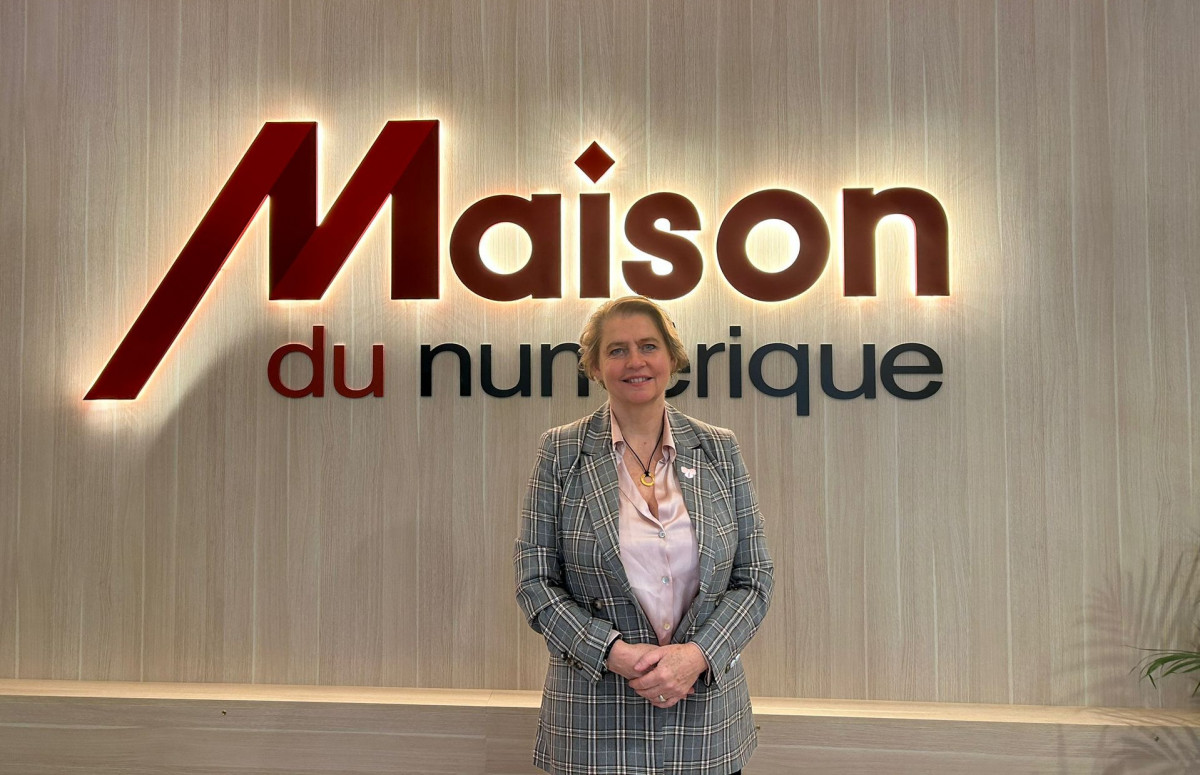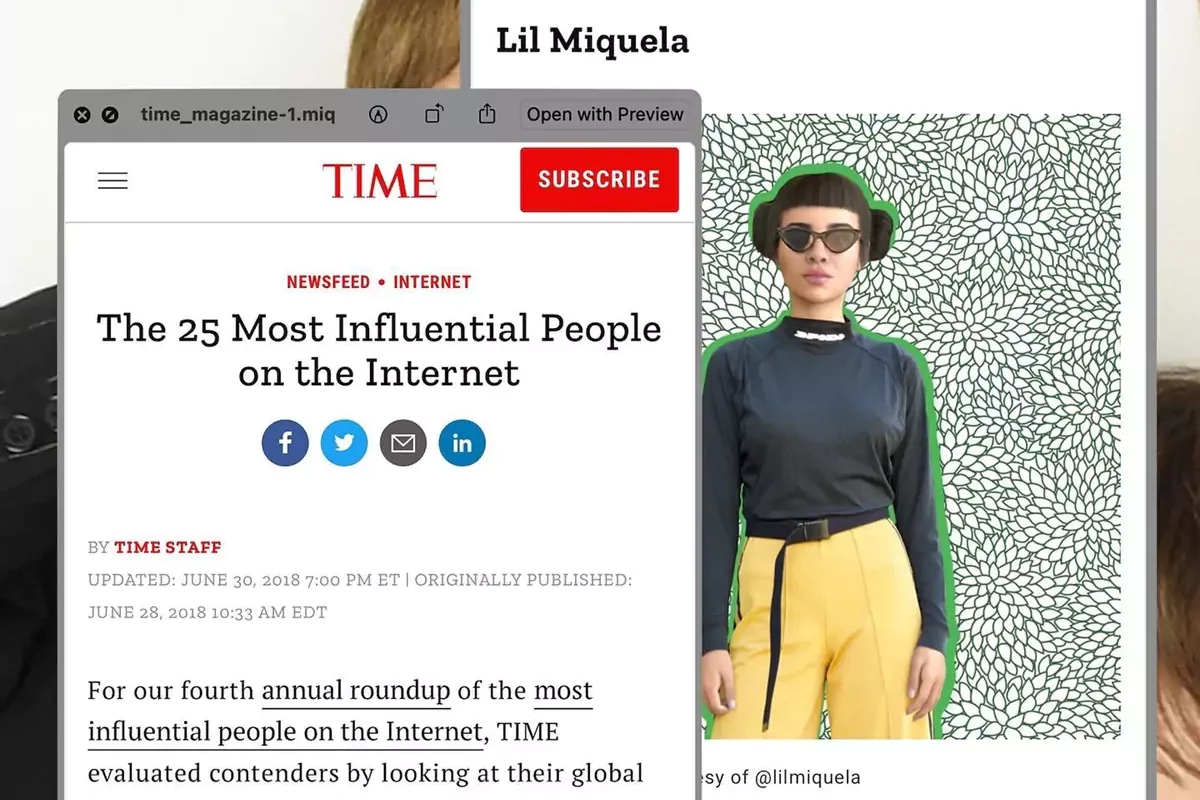Invited to take part in the Maison du Numérique’s ‘Immersive Week’, Monaco Life stepped into the world of biodigitals alongside expert Marie-Nathalie Jauffret to explore how virtual influencers are redefining marketing and inclusivity.
Have you heard of Lil Miquela or Kami? These virtual influencers – or CGI robots – are just two of a steadily growing ‘community’ of biodigital figures that aren’t just changing the game, they’re creating a whole new playing field.
In an insightful talk at the Maison du Numérique on 8th November, Marie-Nathalie Jauffret, a communication and marketing professor at the International University of Monaco, introduced a closely listening crowd to the fascinating world of biodigitals, which are essentially CGI entities that solely exist online.
These virtual entities are captivating the Internet’s social landscape, drawing significant attention on platforms such as Instagram, where they are developing a real presence and engagement with brands and consumers alike.

Biodigitals and marketing strategies
Having researched biodigitals since 2016, Jauffret has been at the forefront of examining the rise of these digital influencers and their impact on communication and marketing strategies.
“An average person spends five hours on the Internet, increasingly in the company of biodigitals on platforms like Instagram,” she tells Monaco Life.
These computer-generated humanoids, like the famed Lil Miquela with her 2.7 million Instagram followers, are redefining the essence of the influencer world.
“She dances, updates on her life, and will always be 19,” Jauffret notes, emphasising perpetual youth as a major appeal of these digital creations.
But their presence is not just confined to social media; they have infiltrated major brand campaigns, with names like Shudu.gram gathering 241,000 followers on Instagram and engaging audiences through advertisements. Lil Miquela, for her part, recently posted a BMW ad that garnered close to 75,000 likes.
View this post on Instagram
Beyond the screen: the influence of virtual personas
The more prominent biodigitals have come to embody narratives and personify brands, as explained by Jauffret.
“Some humanoids work for companies, like IKEA, representing a personality, a character for your brand,” she tells Monaco Life, underscoring their utility in branding as well as the complex relationship these entities have with consumer trust.
These virtual entities are not merely blips in the marketing radar. They signify a profound shift in cultural narratives and the representation of brands.
“She (Lil Miquela) is here to show that innovation is everything, and we are going into a different reality,” Jauffret elaborates.
Bridging gaps in law and society
In her talk, Jauffret also highlighted the legislative gaps in AI by discussing Sophia the robot, a humanoid that showcases the societal impact of AI, exemplified by her Saudi citizenship.
As Sophia can perfectly mimic human emotions and express her thoughts, she underlines the urgency for clear legal frameworks as AI begins to assume roles and identities within human society.
See more: What is ‘Immersive Week’ at Monaco’s Maison du Numérique all about?
A role to play in inclusivity
One perhaps overlooked factor is how biodigital technology could become a powerful tool for inclusivity. To explain this role, Jauffret spotlighted Kami, the first digital influencer with Down syndrome, and how bidigitals can help challenge traditional marketing by representing and empowering minority communities. Essentially, AI can advocate for diversity and transform public perception.
“Kami’s example underscores the potential of biodigitals to not just sell products but to also bring social issues to the forefront, enriching the media landscape with varied human experiences,” says Jauffret.
“A new form of communication”
As we envision the future with Jauffret’s thought-provoking notion of a potential future biodigital ‘president’, the dialogue opens on the potential of these entities to become perfect digital representations of people and nations.
The influence of biodigitals is undeniably growing, with France being the first country in Europe to pass a law protecting influencers, acknowledging the emergence and importance of this new digital realm.
“Biodigitialise” is becoming something of a buzzword in the online marketing sphere of both brands and influencers, the latter of whom are bound to evolve in the coming years, whether as a bid to stay relevant or to reclaim the narrative slipping into the hands of these flawless digital beings.
Jauffret’s closing thoughts offer a profound meditation on the changing tides of communication: “A new form of communication is emerging thanks to these digital characters.”
The era of biodigitals is not only upon us, but is evolving rapidly, compelling us to reconsider our understanding of influence, branding and the very essence of digital interaction.
Make sure you’re never left out of the conversation.
Sign up for the Monaco Life newsletter, and follow us on Facebook, Twitter, Instagram and LinkedIn.
Main photo via Miquela, Facebook
